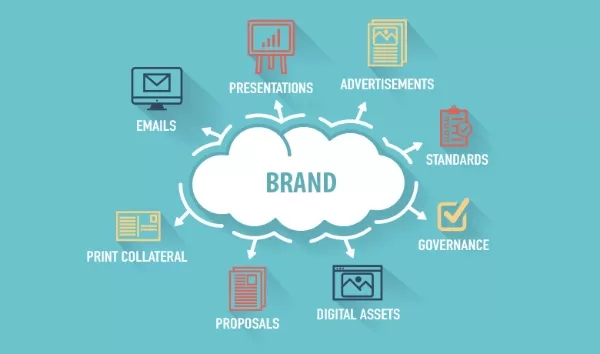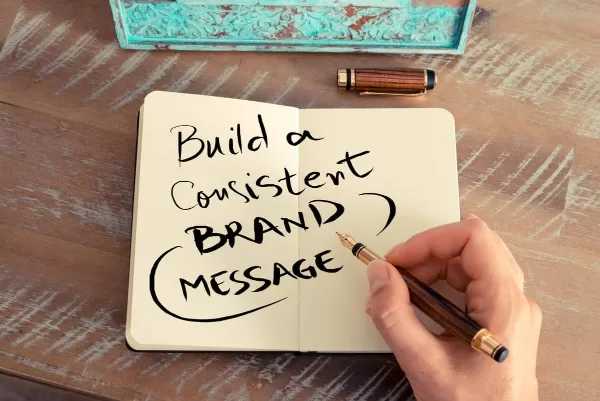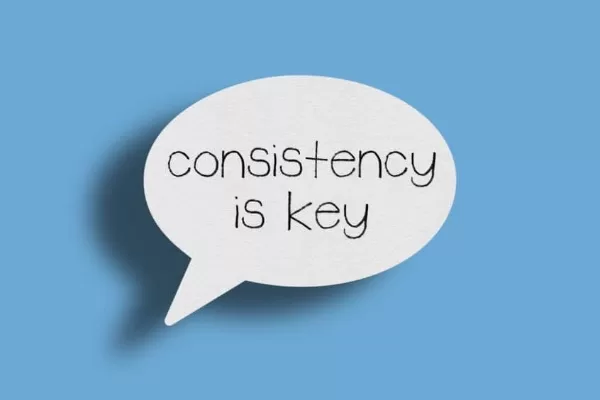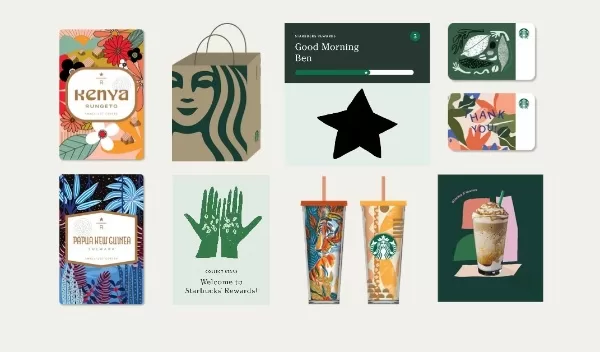Insights
Brand Consistency and Why Should Visual Design Matter for Your Business in 2025?
On Digitals
02/09/2025
41
Brand consistency is like that secret sauce every memorable business has. You know, the thing that makes you instantly recognize a brand from a mile away? In 2025, when your customers are bouncing between websites, social media, apps, and even virtual reality experiences, having consistent visual design is absolutely essential.
What Does Brand Consistency Actually Mean in Today’s Visual World?
How Brand Consistency Has Changed in 2025
You’ve probably heard people say that brand consistency is like the glue holding your company’s identity together. Well, in 2025, that couldn’t be more true. When your visuals and messaging stay consistent, it directly impacts how much customers trust you and want to stick with your brand.
Think about where your customers see you nowadays. They’re hitting your website, scrolling through your social media, maybe even experiencing your brand through augmented reality or virtual reality. That’s a lot of touchpoints, right? Each one needs to feel like the same brand they know and love. Your audience expects a smooth experience where every single interaction has the same tone, style, and emotional feel.

What you need to know about brand consistency
The Building Blocks of Visual Brand Consistency
So what exactly makes up brand consistency in visual design? Let’s break it down into the essentials:
- Your Logo: This one’s obvious, but it needs to be recognizable and used the right way everywhere it appears.
- Color Palette: We’re talking specific color codes that you use again and again. These colors should trigger recognition and create that emotional connection with your brand.
- Typography: The fonts you choose say a lot about your brand’s personality. Use them consistently whether you’re creating digital content or print materials.
- Imagery and Iconography: Your photos, illustrations, and icons should all reflect the same style, tone, and message you want to communicate.
- Design Motifs: Think of these as your brand’s signature design elements or layouts that show up across different campaigns and materials.
When businesses get these visual elements aligned, they don’t just look more professional. They also get better brand recall and more credibility in markets that are getting more competitive every day.
Smart Strategies to Refresh Your Brand Consistency in 2025
Creating Modern Brand Guidelines That Actually Work
Want to keep your brand consistency strong? You need a detailed style guide that covers everything. We’re talking logo usage rules, exact color codes, typography guidelines, imagery standards, editorial style, and plenty of real-world examples.
Having one centralized set of rules prevents what they call “design drift.” You know, when your brand slowly starts looking different across various materials because people aren’t sure what the rules are. With solid guidelines, your whole team can create ads, packaging, social content, or anything else while speaking with the same visual voice.

Strategies to maintain brand consistency
Using Brand Portals and DAM Platforms to Stay Consistent
Here’s something really smart that more companies are doing in 2025. They’re using digital asset management (DAM) tools to keep all their branding organized. Platforms like Canto become your single source of truth for every visual asset your team needs.
Brand portals make it super easy to create consistent content across multiple channels. Whether your team is making social posts or putting together sales presentations, they can grab approved assets that already meet your visual standards. No more guessing, no more starting from scratch, and definitely no more inconsistent results.
The Power of Regular Visual Check-ins and Creative Audits
Even the best brand guidelines need some backup. That’s where regular design audits come in. We’re talking quarterly or twice-yearly check-ins to spot inconsistencies across your website, social channels, and any physical materials you have out there.
These audits are super important for catching small mistakes before they hurt your credibility. In fact, you should also have an editor, or even a director, to ensure that everything remains consistent. This way, you’re staying proactive about brand consistency instead of just reacting to problems after they happen. In today’s fast-moving digital world, this kind of approach keeps you aligned with what your customers expect.
Common Visual Mistakes That Hurt Brand Consistency (And How to Fix Them)
Where Brand Consistency Usually Falls Apart
The biggest culprit is something called design drift, where your visuals slowly start looking different across various channels. This happens most often on websites, in emails, in ads, on social media, and on packaging. These touchpoints are huge because they’re where customers form their opinions about your brand. Even tiny differences in colors, fonts, or images can make people trust you less and have a harder time recognizing your brand.
How Inconsistent Product Visuals Hurt Your Business
If you’re in retail, pay extra attention to this part. Visuals are incredibly important for getting people to buy from you. When your product visuals don’t align properly, purchase intent can drop by up to 90%. Even worse, it can damage how people perceive your brand by 68%, simply because consumers don’t even know that it is you on the shelf.
When customers see mismatched images or inconsistent styling, they start thinking your brand is unprofessional or unreliable. That leads to lost sales and weaker customer loyalty, which nobody wants.
Quick Fixes for Visual Problems
You can fix visual inconsistencies pretty quickly when you know what to do. Refreshing your templates, standardizing how you display products, and enforcing imagery standards can get you back on track fast.
But tools are only part of the solution. Regular training is just as important. It’s essential to educate your designers, marketers, and packaging teams about your brand rules. When everyone involved in creating visuals understands and applies your standards consistently, your brand consistency naturally gets stronger.
Remember, brand consistency isn’t a “set it and forget it” kind of thing. It takes ongoing attention and care. But when you get it right, it becomes one of your most powerful tools for building trust, recognition, and loyalty with your customers.

Common mistakes in ensuring brand consistency
How do consistent visual elements support evolving digital marketing trends in 2025?
How does brand consistency interplay with AI, content automation, and multichannel storytelling?
AI and automation are completely changing how brands create and share content in 2025. Papirfly has found that when you integrate brand portals with AI and analytics, you can actually maintain brand consistency even when you’re creating content at massive scale.
Whether an AI system is crafting an ad for you or you’ve got social posts going out automatically, your visuals still need to feel like your brand. This integration makes sure that happens, supporting cohesive storytelling no matter which channel your content ends up on. Pretty cool, right?
How can visual consistency enhance emerging touchpoints like immersive digital experiences?
We’re living in a time when people are interacting with brands through augmented reality, virtual reality, and all kinds of interactive platforms. With all these new ways to connect, visual consistency becomes even more important than before.
When you have a unified design language using the same imagery, typography, and iconography across everything, those immersive experiences feel authentic and connected to your brand. Whether someone’s walking through your virtual showroom or using your interactive app, consistent visuals help them feel familiar with your brand, trust you more, and stay engaged in these next-generation digital spaces.
What action steps can you take today to strengthen your brand consistency visually?
Ready to get started? This practical roadmap can show you the way to a future with brand consistency being a mainstay in your visual design strategy.
- Audit your current visual assets across all channels: Take a good look at your website, social media, packaging, and ad campaigns. Do they all feel like the same brand? Make note of where things feel off.
- Build or update a polished brand style guide: This should include clear rules for how to use your logo, specific color codes, typography guidelines, imagery standards, and plenty of layout examples so there’s no guessing.
- Deploy a brand portal or DAM system: Get all your approved assets in one central place so every team member or partner is using the same resources instead of making their own versions.
- Schedule regular visual audits: Set up quarterly or twice-yearly reviews to catch inconsistencies before they become bigger problems. Don’t forget to check third-party channels too.
- Train teams and partners: Make sure everyone who creates content for your brand understands and can apply your visual standards consistently. This is ongoing work, not a one-time thing.
- Monitor emerging channels: As AI-generated content and new platforms keep popping up, keep checking that your visuals stay aligned with your brand identity.

Examples of how a global brand maintain their brand consistency
FAQs about Brand Consistency in Visual Design
How often should I update my visual brand guidelines?
Review your guidelines annually for small tweaks and updates. For bigger refreshes that keep you current with design and market trends, think about doing those every 3 to 5 years.
What visual elements matter most for brand consistency?
Your logo, color palette, typography, imagery, iconography, and those consistent design motifs that make your brand recognizable.
How can I ensure external partners or agencies follow my visual brand?
Share a brand portal with your partners, make style guide compliance non-negotiable, and always review deliverables before they go live. No exceptions. From there, monitor the products delivered by those parties to ensure full compliance.
What tools help maintain visual consistency across marketing channels?
Digital asset management systems, brand portals, and templating tools are those that come to mind. These centralize your assets and make sure everyone’s using them consistently.
Can inconsistent visuals hurt my search and digital performance?
Absolutely. When your visuals are inconsistent, people trust you less and bounce from your site more often. That indirectly hurts your SEO and conversions, which nobody wants.
How do I measure if my visual brand consistency is effective?
Tracking your audit results, asset usage statistics, customer feedback, and performance metrics like brand recognition, click-through rates, and conversions tied to your visual campaigns to know how well it is performing on all fronts, like social media platforms, websites, outreach emails, and more.
Maintaining Brand Consistency With Visual Elements is Key
Brand consistency really is the backbone of any strong visual identity. It makes sure that every single touchpoint reinforces recognition, builds trust, and creates loyalty with your customers. In today’s fast-changing digital world, staying consistent across your logos, colors, typography, and imagery gives your business the edge it needs to stay memorable and relevant. Auditing your assets, embracing new tools, and training your teams can let you future-proof your branding with top-tier consistency.
On Digitals knows that visuals are way more than just design. Our social outreach service helps businesses craft consistent, engaging, and future-ready identities across all platforms. Whether you need a refreshed style guide, bold campaign visuals, or complete brand design solutions, our team makes sure your brand stands out with clarity and impact. Explore our creative design services today and take the next step toward building an unforgettable brand identity.
NEWEST POSTS
- Video Campaign Google Ads: A Practical Guide to Strategy, Formats, and Optimization
- Small Business Branding – 4 Strategies To Boost Your Brand!
- A Complete Guide to Crafting a Powerful Personal Branding Statement That Stands Out
- Brand Identity Explained: Core Definition, Components, and Strategic Value
- Benefits Of Personal Branding – 8 Advantages You Must Know
Read more
